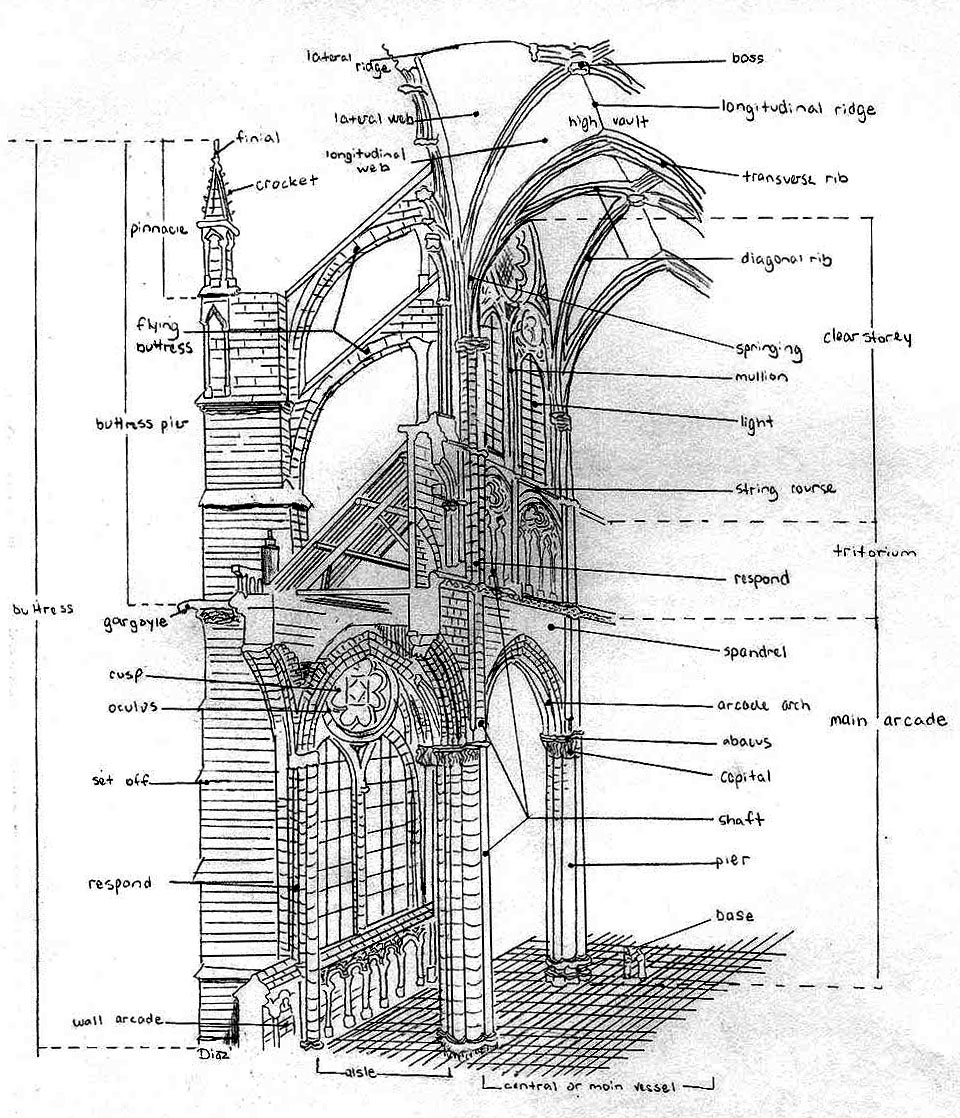A Description of Gothic Architecture

A style featuring pointed arches and vaults in windows or doors, steeply pitched gables, and balanced thrusts in stone masonry. Vocabularyarch - a curved structure spanning an open space, supporting the weight above it.boss - a decoration (wood or stone) over the intersection of ribs or in the center of a panel or coffer. clerestory - an upward expansion of an interior space created by many vertical windows in a wall. crocket - a decorative ornament to a decrative design, usually stylized foliage, and is often found on spires. finial - the terminal point of a spire, pinnacle, or gable. flying buttress - a buttress (a pier that supports a wall) with a rampant arch which supports the masonry curtain walls of Gothic construction. parapet - a low retaining wall at the edge of a roof, proch, or terrace. pier - an upright support. pinnacle - a terminal ornament found on roofs, buttresses, or other high points. rib - a transverse or diagonal member of a vault. tracery - decorative, curving mullions of a window. triforium - a gallery of arches above the longitudinal arches along the nave of a church. vault - part of a structure roofed by arched masonry. |